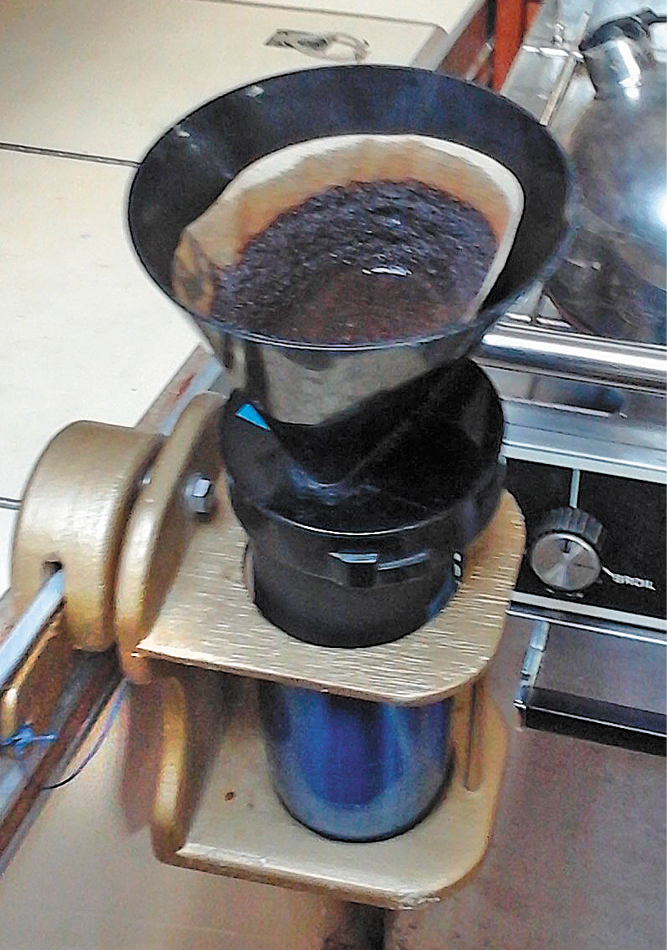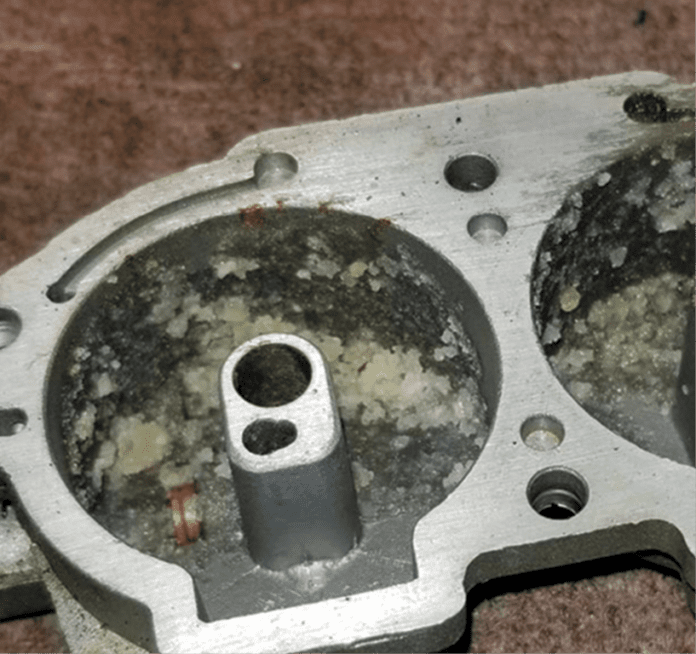E15 IN CARBURETORS
I enjoyed your E15 fuel article in the September edition of Practical Sailor “Gas Engine Owners Beware of E15.” I don’t think that the picture of the carb bowl you featured really showed how much damage ethanol fuel can do to the inside of carbs though.
Please see the attached pictures of the inside of the carbs of a 2004 Yamaha 150 hp. two-stroke that I dismantled a few weeks ago. The boat was afloat and the motor was left tilted up for three months and had been run on E10 fuel with no fuel stabilizer. All three carbs were like this inside. Needless to say the motor would not start, which is why I was contacted by the owner. I have seen a lot of E10 damage in carbs but this is some of the worst I’ve seen!
I have overhauled many marine carbs over the years. I have found that by far the best way of cleaning them is to immerse the carb components for a couple of hours in a heated Ultrasonic cleaning tank containing a specific carb cleaning solution. The Ultrasonic works so well that I do not need to remove the small carb jets which can be a bear to remove and damage easily.
Lawrence I. Simpkins
ABYC Certified Marine Technician
Sterling Aero Marine Services
Bumpass, VA
ONBOARD COFFEE-MAKING
Regarding your recent blog post “Adventures in Onboard Coffee-making,” I too am a fan of the drip method. The photo below, taken while not underway, shows my homemade gimballed mug holder which allows me to drip at any angle of heel. I only drink drip coffee, so I made this gimball mount for our mugs which allows us to make coffee at any heel, and have never had a spill after more than a decade of use on the Chesapeake. Construction is rather simple. A set of hole saws speeds it up, but a hand saw, coping or scroll saw, and drill are all that is needed. My suggested method is to cut a disk from a 2-by-4 and then remove a segment so the disk will sit flat on the counter after a slot is cut for the fiddle.
My fiddle has a bead at the top so I made a wedge, seen in the photo, attached with a blue string, to keep the unit firm against the fiddle. Make your vertical piece: 3/8-inch plywood works well. For the horizontals 3/16-inch plywood has been adequate with a dowel glued into recessed holes between the top and bottom. For the bottom support, cut a hole in one piece for the mug base and glue this to a solid piece. A smooth-shank bolt installed through a slightly oversized hole in the vertical sections, with two washers between it and the fiddle mount, serves as the pivot point for the holder to swing.
Brian Zeichner
Wind Rush CS36T 1983
Magothy River, MD

MORE COFFEE ADVENTURES
For grinding we use the JavaPresse Manual coffee bean grinder. It’s easy to use, has 18 coarseness settings, and uses no electricity. For regular coffee we use either the Stanley Travel Mug French Press or the Stanley Stay-Hot 48-ounce French Press. Both have proven idea for boat coffee as they keep your coffee hot! The travel mug press is the best I’ve used for an individual (16-ounce) serving. Put in your coffee, add water, wait a few minutes then push down on the press, screw on the lid and you have hot coffee that won’t spill. For espresso we use the Wacaco Nanopresso Portable Espresso Maker. It makes an excellent espresso and uses a manual pump to create the pressure. We ended up getting the ‘Barista’ accessory kit as it has a larger water tank and basket, so you can make double shots. All these items have proven easy to use and clean up.
Andrew Leggett
via PS Online








































